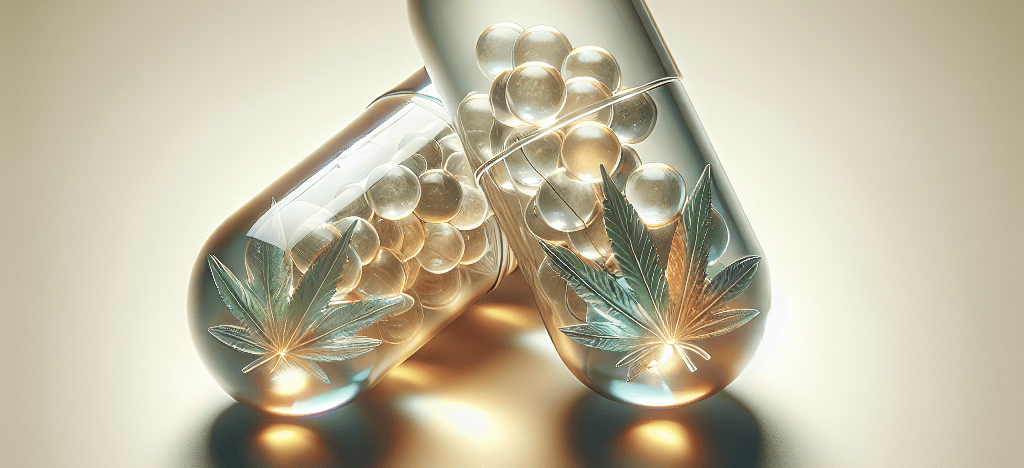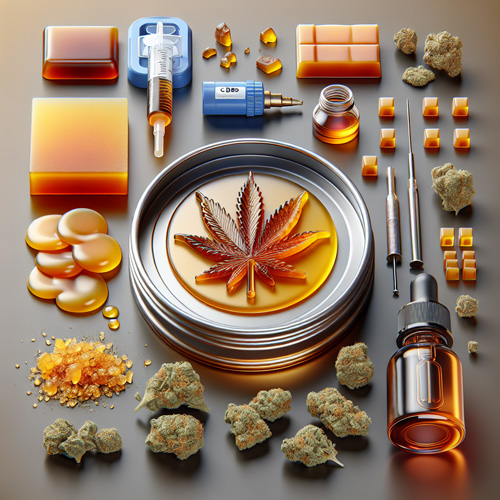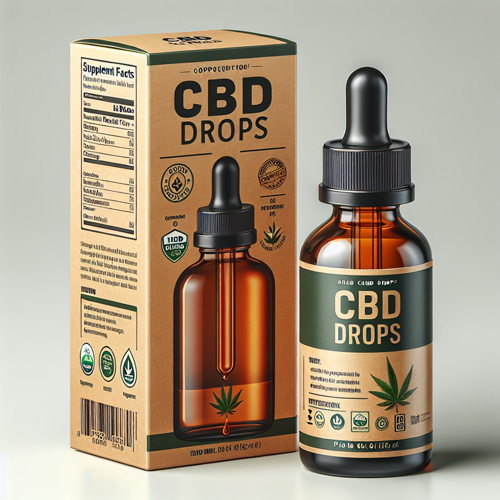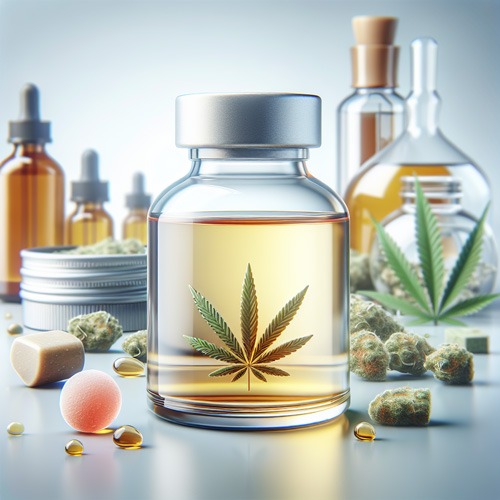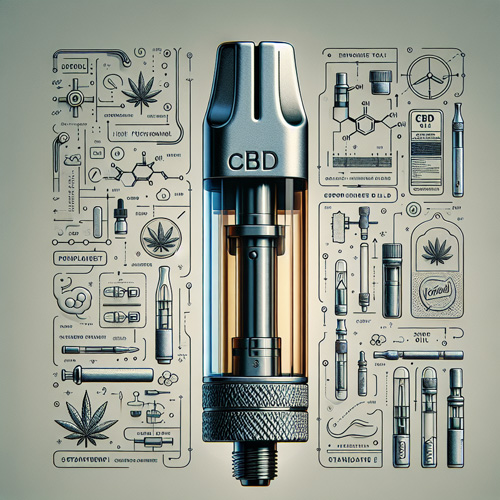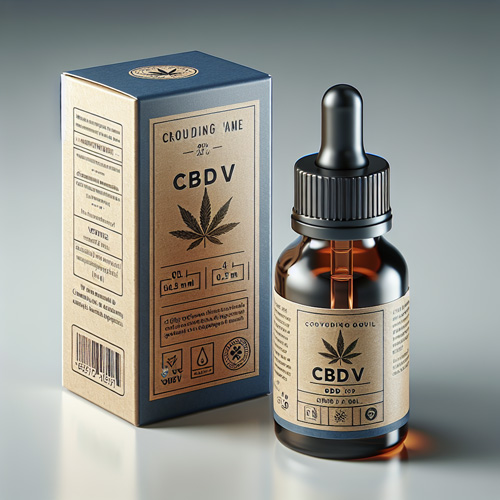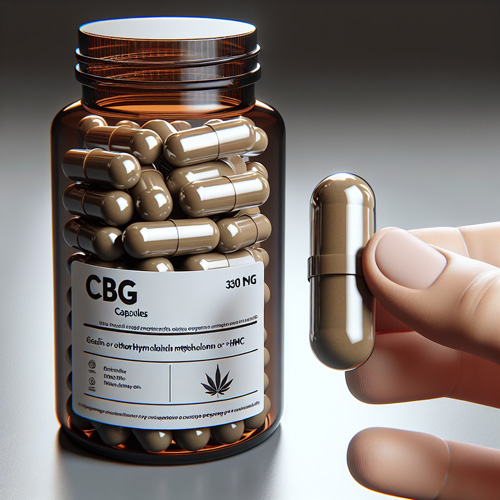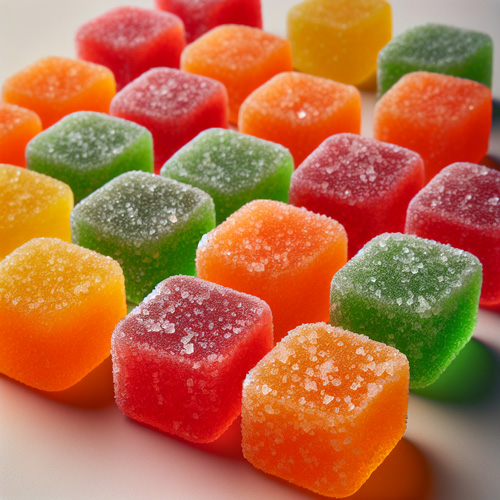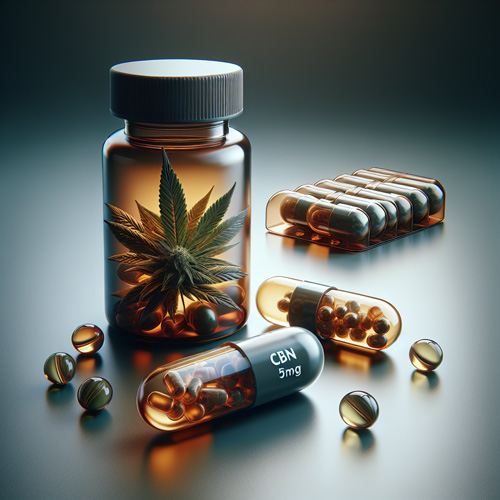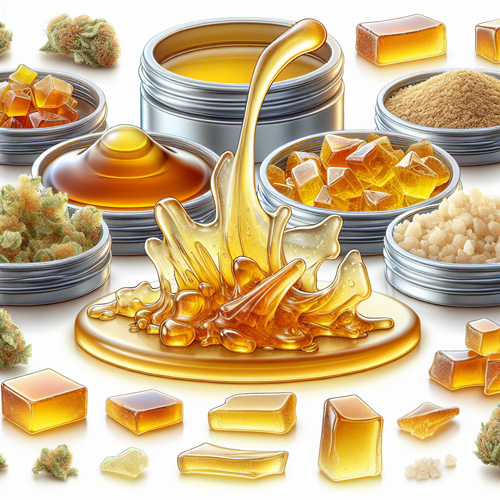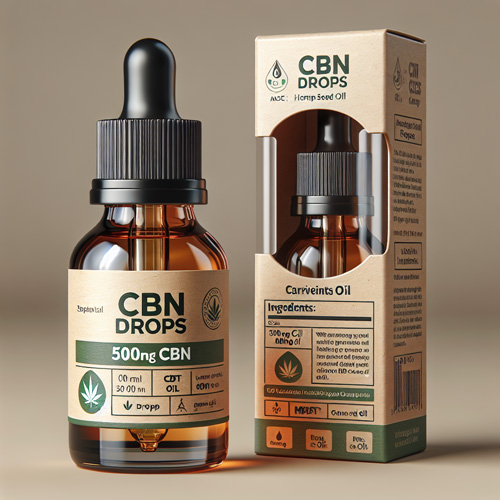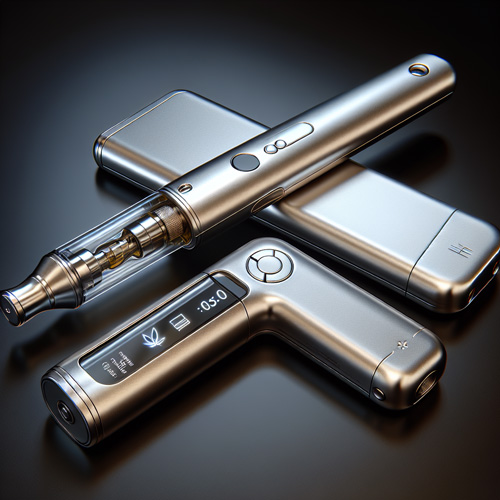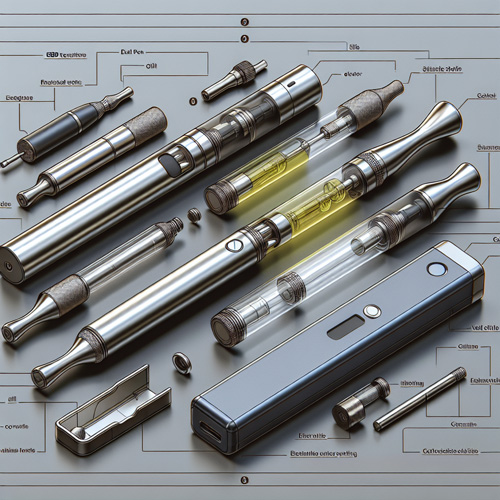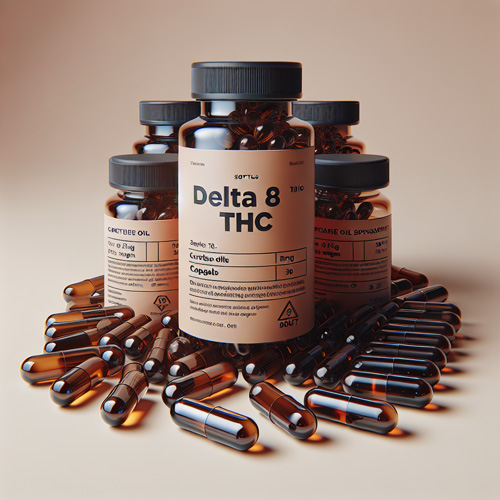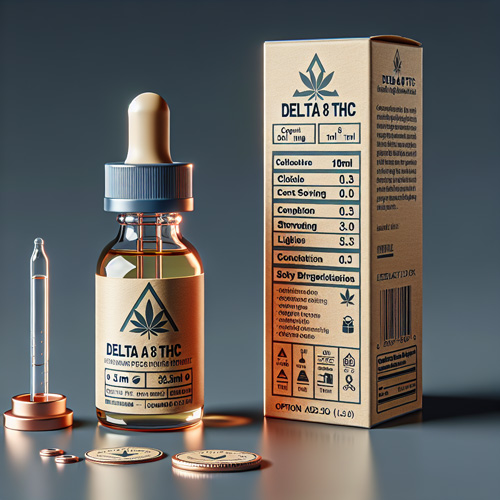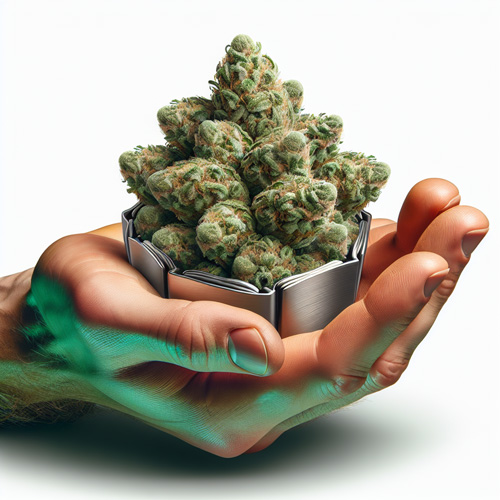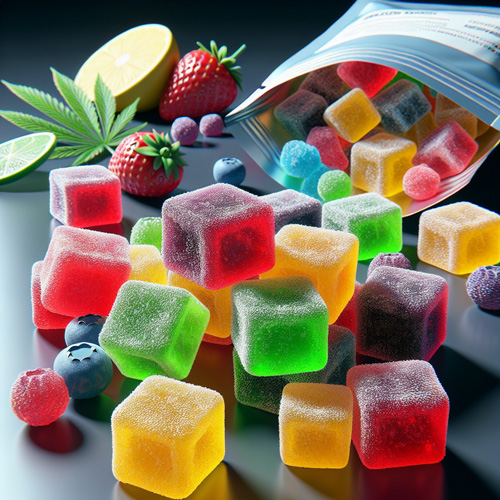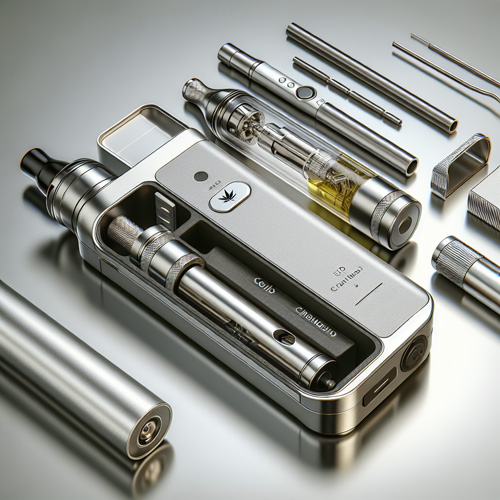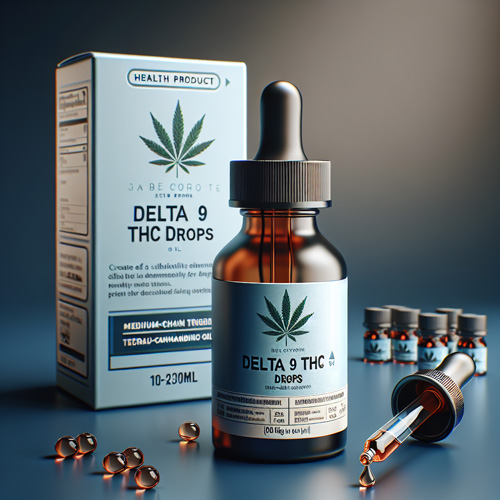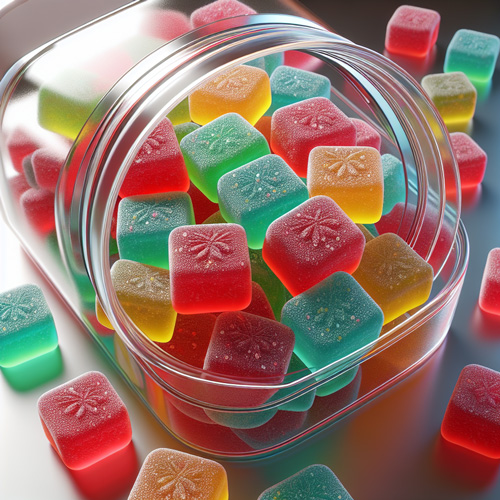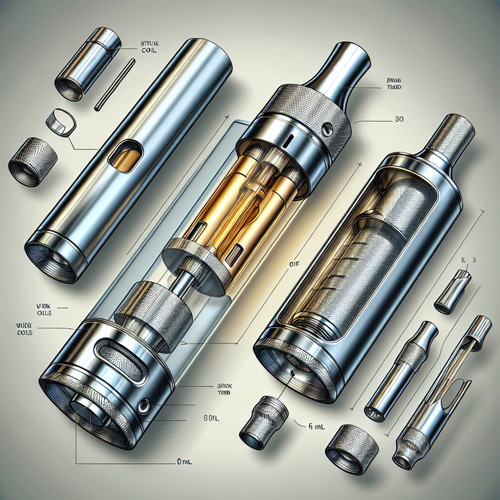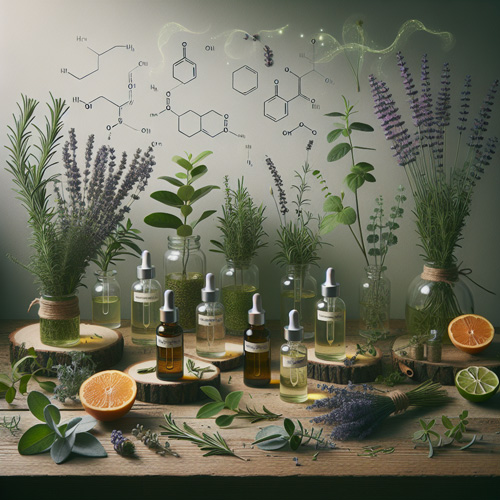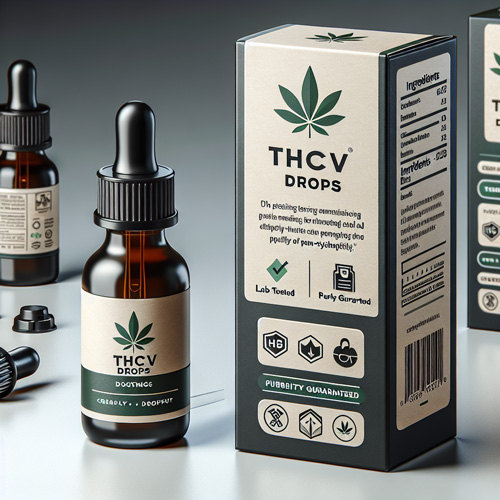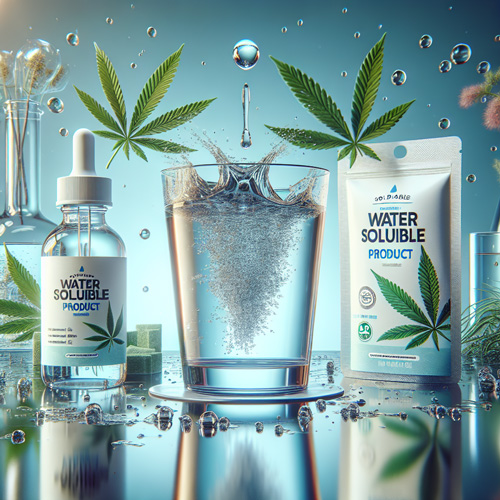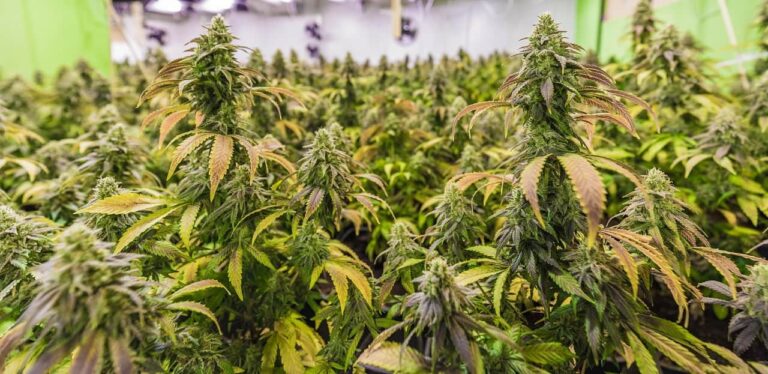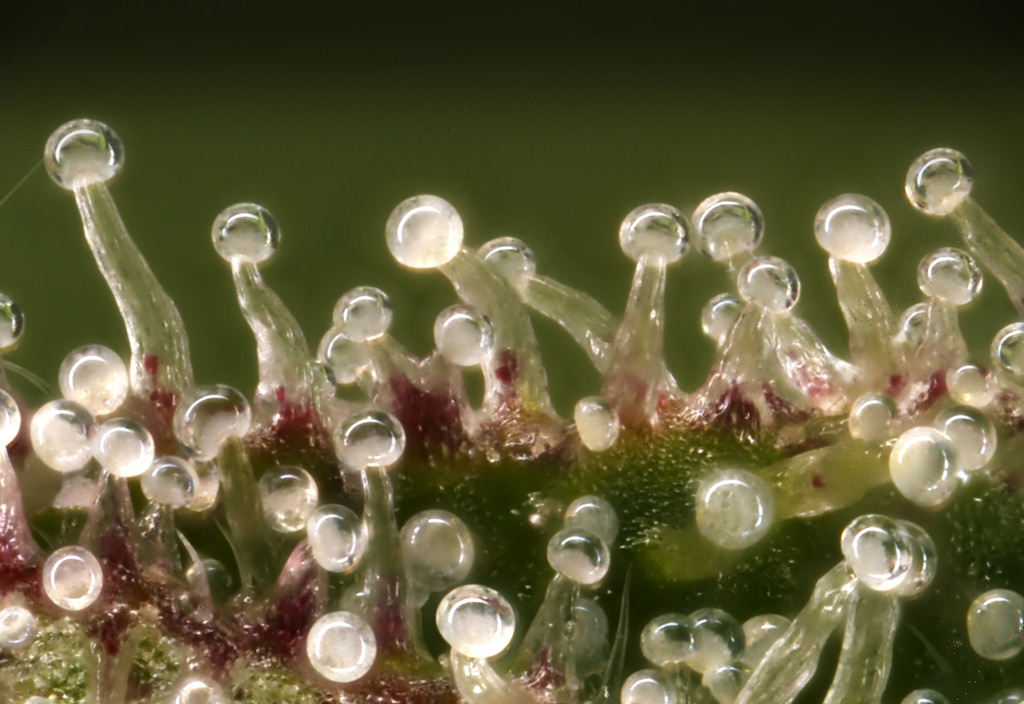
What Are Trichomes
What makes cannabis flowers so sticky and frosty looking? Trichomes are responsible for that and so much more. But what are they? Find out below.
Do you see those glistening glands all over the cannabis flowers? Why are they so coveted? What makes them so special? Those shiny, sticky crystal-looking things are called trichomes, or trichs for short. And they are very special when it comes to cannabis.

On the technical side, trichomes are defined as: an outgrowth from the epidermis of plants, as a hair. It stems from the Greek word τρίχωμα (trichōma), which means hair.
But how are trichs helpful to the cannabis plant? What do trichomes look like? Let’s take a deeper dive into these strange protuberances.
Trichome Functions
The appearance of trichomes can be found throughout the plant world. They have been observed on many different plants like algae. One neat example is on the carniverous plant known as the Cape Sundew. This plant grows strap-like leaves that are about an inch and a half in length, and they are covered in bright hairs that have a sticky bulb on the end of those hairs. The sticky mucilage traps and then surrounds insects, namely arthropods, which the Cape Sundew uses as a food source.
In cannabis, the trichs are produced for protective and reproductive purposes. When a female cannabis plant begins to produce flowers, those flowers are a highly prized target for various animals and insects. And during the late summer, the sun’s damaging UV rays are also reaching a peak.
These resinous glands are produced as a defence mechanism to these factors by female cannabis plants. On top of being a built in sun screen, the trichs are essentially little factories producing the cannabinoids and terpenoids we have come to covet in the cannabis industry. The strong and amazing aromas produced are a deterrent to many bugs and animals, and being paired with a bitter, pungent, and astringent taste creates a less than desirable snack for many herbavores.
Types of Trichomes On Cannabis
Bulbous
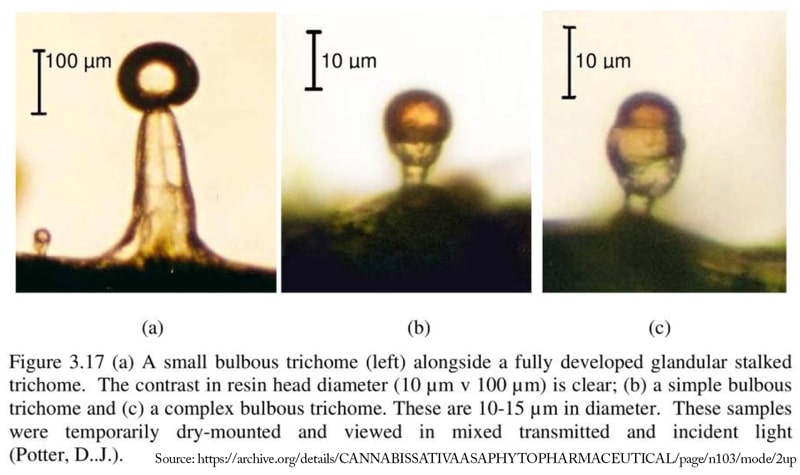
Bulbous trichomes are the smallest variety of trichs, being roughly 10µm in size. They are found across the skin of the plant, mainly along the stems and leaves. They are capable of growing a simple glandular trichome bulb (figure 3.17b), or a more complex compartmental gland (figure 3.17c).
Capitate sessile
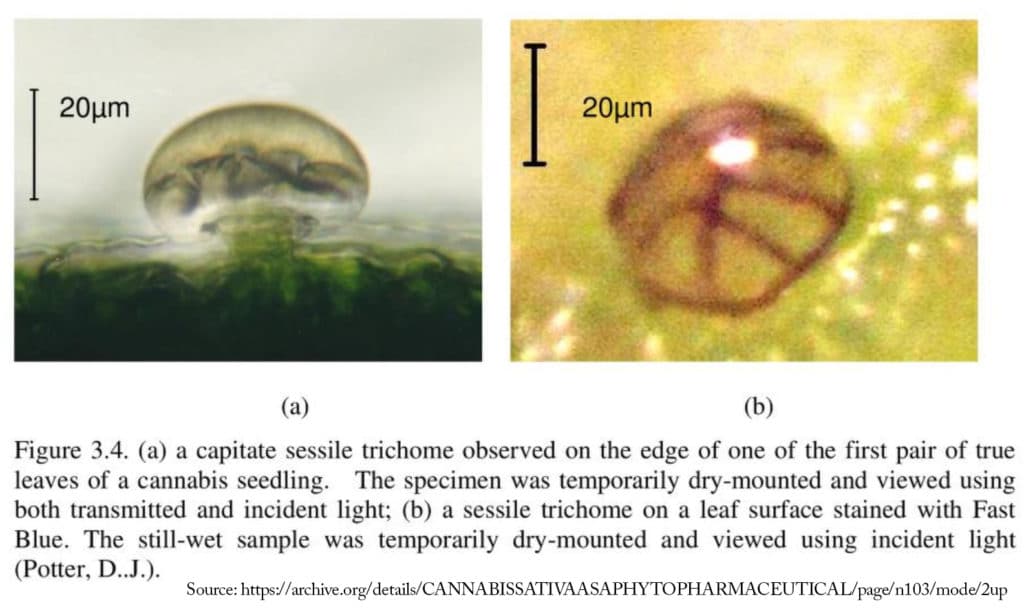
Capitate sessile trichomes, just like the bulbous trichomes though slightly larger, are found all across the plant surface, except for the initial cannabis leaves after sprouting, called cotyledons. They form from cells just beneath the surface layer and burst through the epidermal cells, and some physiologists consider it an ’emergence’, while many others still consider it a trichome.
Capitate stalked
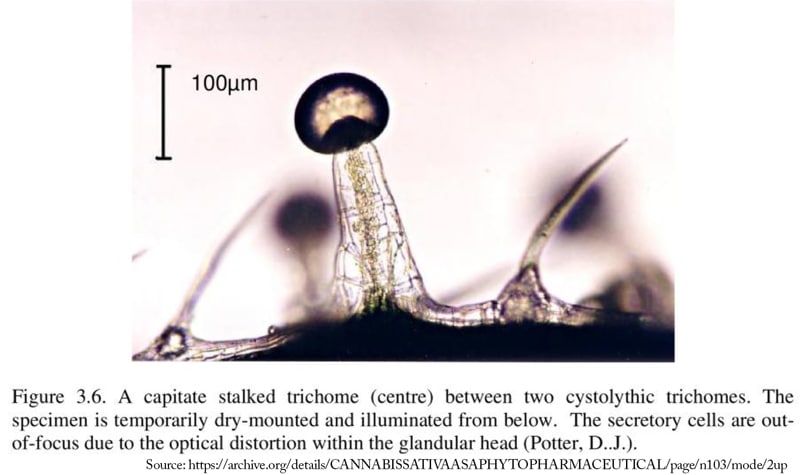
Capitate stalked trichomes are found in abundance on the calyx, bracts, and petioles. They are considered to be the most complex of the trichs, with a fully developed resin head atop a multicellular stalk. At the base of the trichome head are what are called secretory cells. These cells are responsible for the secretion of cannabinoids, terpenes, flavonoids, and is the main function of trichomes in cannabis. Terpenes are responsible for the strong aromas of the plant matter as it is growing as well as post harvest.
These are also very large in comparisson to the cannabis trichomes, being roughly 70-100µm in size, plus the length of the stalk. As the cannabis flower matures, these bulbs start off as clear, and progress to milky and opaque, and on to an amber color as full maturity comes to an end. They are often compared in appearance to mushrooms.
Simple unicellular
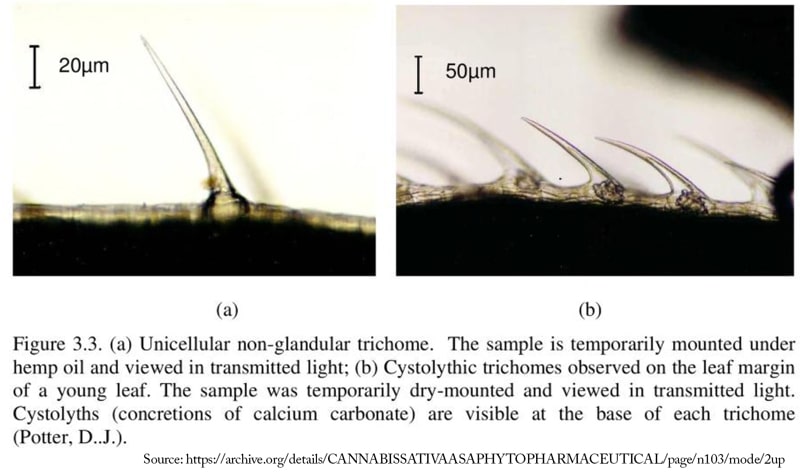
Simple unicellular trichomes are what may be considered as a defensive type of trichomes. As the name alludes to, these are created from a single cell, and they have the appearance of hair or peach fuzz along the epidermal layer. The spikey nature of these non glandular trichomes make it difficult for smaller insects to reach, and they are found in higher concentrations on the underside of true leaves as well as the cotyledons.
Cystolythic
Cystolythic trichomes on cannabis can be found on the upper leaf surface of the cannabis plant, and a few other places. They almost always are found pointing towards the tips, or the distal part, of the leaves, bracts, and bracioles. Cystolythic trichs take the shape of a spike or a claw, and are more robust than their simple unicellular counterpart. At the base of these are what is called a cystolyth, which gives the trich its name. This cystolyth is made from calcium carbonate, giving them a solid foundation for additional defenses against pests and environmental pressures.
Antherial sessile
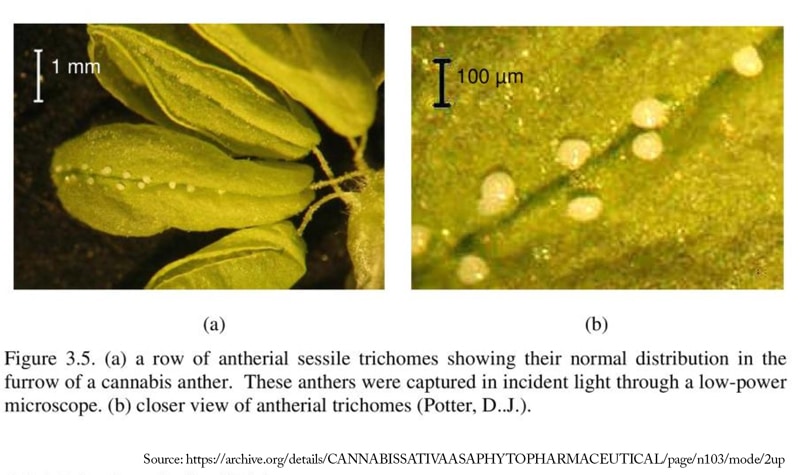
The previous trichs can be found on the female plants. The antherial sessile trichomes are found on the male cannabis plant along the backside of its anthers. Anthers are a term used for the oval shaped sac at the end of a male plants stamen. In cannabis, this is where the pollen in developed and released when the time comes. They can also be found along the calyx that surrounded the anthers. However, those are smaller in size to the ones found directly on the pollen sacks.
Production and Life Cycle
Trichs, as previously mentioned, can be found on the plant throughout the entire life cycle. From the first leaves known as cotyledons to the dark colored trichs as the plant is ready to be harvested, they play a significant role in the life cycle of cannabis.
When cannabis begins it’s flowering phase, the trichomes begin to make magic happen. It is during this time period where all of the beneficial compounds are created. Cannabis contains lytic vacuoles, which contain various types of hydrolytic enzymes and are responsible for breaking down molecules like polysaccharides and proteins into building blocks for the creation of phytonutrients.
Cannabinoid synthesis begins around this time. Those building blocks created by the vacuoles are then synthesized into CBGa. CBG is the mother of virtually all cannabinoids, and different enzymatic processes will determine whether it remains CBG, or is converted into CBD, THC, THCV, CBC, CBN, etc. Those cannabinoids are then secreted into the gland head for storage and usage.
Terpenes are aromatic compounds that give our favorite cannabis strains their unique smells.
Despite their fortitude, trichomes are subject to degradation. As the plant comes to the end of its life cycle, and as more time passes which allows for more predators and environmental stressors to come in contact with the plant matter, the trichs do take a beating. Heat and extreme temperatures, light, oxygen, and physical touching are but some of the ways these outgrowths can be harmed.
Intervention Time
Each strain of cannabis has different ratios of the types of trichomes. They produce different aromas. There is a wide variety of cannabinoid ratios that can be found. And the variety of effects can range greatly between plant genetics.
When a flowering cannabis plant comes to maturity, the trichomes are our guide to knowing when harvest time will be.
Under a microscope, you will be able to garner a much clearer view of the trichomes on this amazing plant. During the end stages of the plant’s life, the trichome coloration will change. As the medicinal comounds are created and mature, the gland heads will begin to change color. Initially, they are clear and transparent. As time goes on, they begin to turn opaque, or a milky white. After that, they will turn brown or amber.
Harvesting for most cannabis is done with there are mostly milky white trichome cells, and about 10-20% amber, depending on who you ask. In CBD production, often times the hemp is harvested early so that THC production is kept to a minimum, and the whole crop can stay within the guidelines to be called hemp.
Once harvested, the plant is carefully dried and cured to prevent the degradation of trichomes. If it is of high enough quality, a lot of that will go towards smokeable hemp flower. Due to crop sizes and limited time windows to proper harvesting, a lot of the mass produced hemp will go towards extraction. Popular methods of extraction are CO2, butane, ethanol, cold press, ice water extraction, among many others.
Conclusion
Cannabis trichomes are truly the work horses of the cannabis plant. From the flowers’ frosty appearance due to the resin glands known as trichs, to the cannabis oil concentrates that is made from large concentrations of trichomes, trichome production is a very important process in gaining the myriad benefits from this plant.
